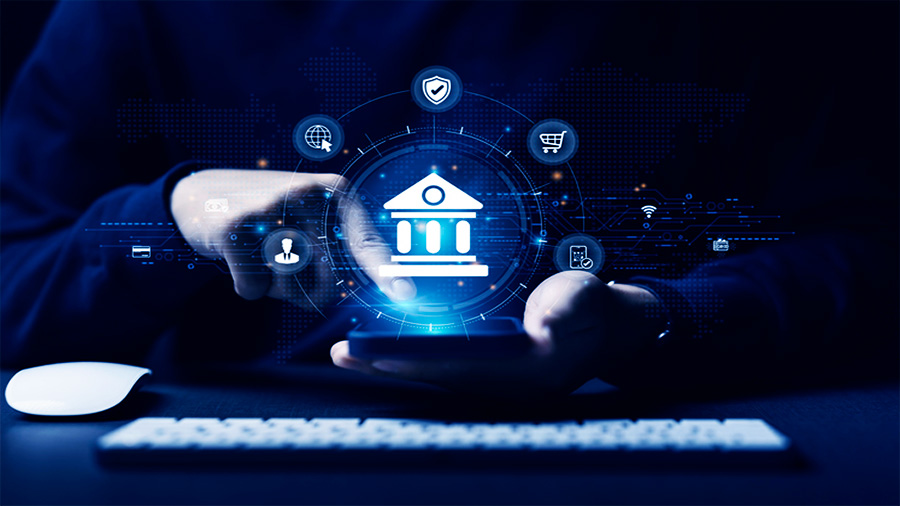Access to credit is a critical driver of economic growth, yet it remains limited in many developing regions. Traditional banking systems often exclude large portions of the population due to high costs, lack of infrastructure, and rigid qualification requirements. However, technology is transforming the lending landscape, making loans more accessible and affordable. Digital lending platforms and FinTech innovations are bridging the gap between borrowers and lenders, fostering financial inclusion and economic development. This article explores the role of technology in expanding lending in developing regions, highlighting key innovations and their impact on underserved communities.
Challenges in Traditional Lending Systems
Developing regions face numerous barriers to accessing traditional financial services. These challenges disproportionately affect rural communities, small businesses, and individuals with limited credit histories.
Lack of Physical Infrastructure
In many developing areas, physical bank branches are sparse or nonexistent, making it difficult for people to access financial services. High operating costs deter banks from establishing a presence in remote locations, leaving these communities underserved.
Stringent Qualification Criteria
Traditional lending systems often require extensive documentation, credit histories, and collateral, which many individuals in developing regions cannot provide. This exclusionary approach leaves a significant portion of the population without access to loans.
High Transaction Costs
Processing loans through traditional channels involves significant administrative costs, which are often passed on to borrowers in the form of high interest rates and fees. This makes borrowing unaffordable for many low-income individuals and small businesses.
Informal Lending Practices
In the absence of formal financial systems, many people rely on informal lenders who charge exorbitant interest rates and operate without regulatory oversight. These practices often trap borrowers in cycles of debt and exploitation.

How Technology is Transforming Lending
Technology is revolutionizing the lending landscape in developing regions by introducing innovative solutions that address the limitations of traditional systems. Digital lending platforms, mobile technology, and FinTech innovations are making credit more accessible, affordable, and efficient.
Digital Lending Platforms
Digital lending platforms leverage technology to connect borrowers and lenders directly, eliminating the need for intermediaries. These platforms use algorithms and data analytics to assess creditworthiness, enabling faster loan approvals and disbursements.
For example, platforms like Tala and Branch use mobile data, such as phone usage patterns and transaction histories, to evaluate borrowers in real-time. This approach bypasses the need for traditional credit histories, making loans accessible to individuals previously excluded from formal financial systems.
Mobile Technology and Financial Inclusion
The widespread adoption of mobile phones in developing regions has been a game-changer for financial inclusion. Mobile banking apps and SMS-based services allow users to apply for loans, make payments, and access financial information without visiting a physical bank.
Services like M-Pesa in Kenya demonstrate the transformative potential of mobile technology. By integrating digital wallets with lending services, M-Pesa enables users to access microloans and build credit histories, fostering economic empowerment.
Blockchain and Smart Contracts
Blockchain technology enhances transparency and security in lending transactions. By creating immutable records of loan agreements and repayment histories, blockchain reduces the risk of fraud and disputes. Smart contracts automate loan disbursements and repayments, ensuring compliance with agreed-upon terms.
In regions with weak legal frameworks, blockchain provides a reliable alternative for enforcing contracts and building trust between borrowers and lenders.
Artificial Intelligence (AI) and Machine Learning
AI and machine learning algorithms analyze vast amounts of data to assess creditworthiness, identify risks, and personalize loan offerings. These technologies enable lenders to make data-driven decisions, reducing default rates and improving financial outcomes.
For instance, AI-powered credit scoring models consider alternative data sources, such as social media activity and e-commerce behavior, to evaluate borrowers without formal credit histories.

Impact on Borrowers and Communities
Technology-driven lending solutions are transforming lives and communities by providing individuals and businesses with the resources they need to thrive. The impact extends beyond financial inclusion, driving broader economic and social benefits.
Empowering Small Businesses
Access to credit enables small businesses to expand operations, purchase equipment, and hire employees. This drives local economic growth and creates job opportunities, reducing poverty in underserved communities. In many regions, women-owned businesses benefit significantly from digital lending platforms, as they often face barriers in traditional banking systems.
Improving Education and Healthcare
Personal loans obtained through digital platforms help families invest in education and healthcare. Parents can pay for school fees, books, and uniforms, while healthcare loans cover medical expenses, ensuring access to essential services.
Fostering Financial Literacy
Digital lending platforms often include educational resources to improve financial literacy among users. By teaching borrowers about budgeting, saving, and credit management, these platforms empower individuals to make informed financial decisions.
Reducing Informal Lending Practices
By providing affordable and regulated credit options, digital lending solutions reduce reliance on informal lenders, protecting borrowers from exploitation and high-interest debt cycles.
Challenges and Risks
While technology offers significant benefits, it also presents challenges and risks that must be addressed to ensure sustainable lending practices.
Data Privacy and Security
The use of alternative data for credit assessments raises concerns about data privacy and security. Ensuring robust safeguards and compliance with data protection laws is critical to maintaining user trust.
Over-Indebtedness
Easy access to credit can lead to over-borrowing, particularly among individuals with limited financial literacy. Lenders must implement responsible lending practices, such as setting borrowing limits and providing clear terms and conditions.
Technological Barriers
While mobile technology is widespread, some regions still face connectivity issues and limited digital literacy. Bridging these gaps requires investment in infrastructure and education to ensure inclusivity.
Regulatory Challenges
In many developing regions, regulatory frameworks for digital lending are still evolving. Striking a balance between innovation and consumer protection is essential to fostering a healthy lending ecosystem.
The Future of Technology-Driven Lending
The future of lending in developing regions lies in continued innovation and collaboration. Emerging technologies, such as artificial intelligence, blockchain, and 5G connectivity, will further enhance the accessibility and efficiency of credit services.
Partnerships between governments, financial institutions, and technology providers are crucial for scaling digital lending solutions. By aligning efforts to address regulatory challenges, expand infrastructure, and promote financial literacy, stakeholders can create an inclusive and sustainable lending ecosystem.
Additionally, integrating digital lending with broader financial services, such as savings accounts and insurance products, will empower individuals to build long-term financial resilience.
The Conclusion
Technology is revolutionizing lending in developing regions, breaking down barriers and driving financial inclusion. Digital platforms, mobile technology, and advanced analytics are transforming the way loans are accessed and managed, enabling individuals and businesses to thrive. While challenges remain, the potential for technology to create lasting economic and social impact is immense. By addressing risks, fostering innovation, and prioritizing inclusivity, the role of technology in expanding lending will continue to reshape economies and empower underserved communities worldwide.

